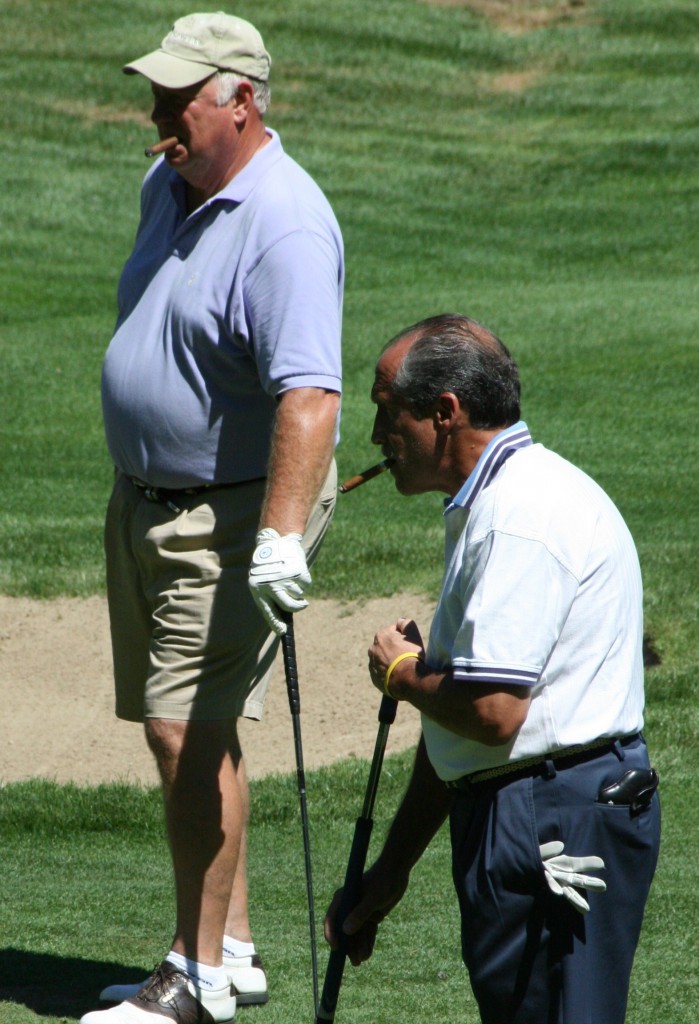
buy gabapentin online overnight delivery Maybe try adding a cigar: Fuzz and Les, August, 2010.
13. Golf is continually challenging. I used to play frequently with a low-handicap player and long-time student of the game named Art. During one round, he was having trouble with his driver, and on the second tee he said to me in exasperation, “I can’t remember how I take the club back.” Every golfer knows that situation. One day, your swing is there; the next day (or hole), it’s not. No matter how good your game may seem at any particular moment, there’s always some part in need of tinkering, and you always know that the parts which now seem sound may suddenly disintegrate. This prospect of arbitrary, undeserved disaster causes strange behavior. Nick Faldo doesn’t trim his fingernails once a tournament has begun. Tom Watson carries an odd number of coins.
Because the golf swing is so ephemeral, it requires special treatment. My own theory is that you should always be changing something about your game, even when you’re playing well. Your swing won’t stay still, so you mustn’t either. Your only chance of keeping up is to stay a step ahead. Maybe strengthen your grip slightly, or open your stance a bit, or think a little harder about the position of your chin—anything to distract the game-destroying gremlins that are always standing on your shoulder, waiting for you to become complacent. Once when I was playing especially well, I decided suddenly to stop wearing a glove. I wasn’t unhappy with gloves; I just needed something different to think about. And, if my game suddenly went south the following week, I wanted something dumb to blame it on.

